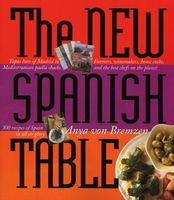Advertisement
Beans and Potatoes
Rustic Elegance
Published 2005
Spanish cuisine presents a delicious dichotomy. On the one hand it’s all Mediterranean lightness; on the other, it’s defined by big-flavored stews starring potatoes and legumes. Because the bean pot is central to traditional Spanish cooking, no other country treats legumes with so much finesse and respect. Chickpeas, lentils, and favas have been relished in Spain since antiquity. Another bean species, Phaseolus vulgaris (which includes kidney beans), hails from the New World and was originally cultivated and popularized in Spain by the monks. Historically cheap, tasty, nutritious, and easy to grow, legumes form the backbone of the most important family of Spanish dishes: potajes, guisos, ollas, potes, pucheros, cocidos. These bracing stews, soups, and casseroles normally combine pulses and vegetables with meat or, during Lent, bacalao. Once the pillar of cocina pobre—poor man’s cuisine—today best-quality legumes can be as expensive as seasonal vegetables, and top-grade charcuterie likewise isn’t cheap. No matter. Bean cuisine continues to flourish in Spain—in homes, at humble roadside tabernas, and at Michelin-starred restaurants where an ethereal emulsion of white beans or chickpeas might come topped with cigalas (langoustines) or sautéed foie gras.

